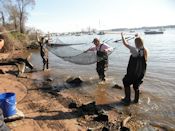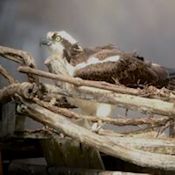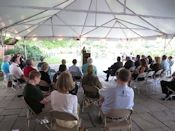Students Visit Dyke Marsh
Under beautiful spring skies, 40 eighth graders and their teachers from Alexandria’s St. Stephens and St. Agnes School visited Dyke Marsh on April 5, 2017, under the leadership of their science teacher Robert Davis, Middle School Science Department Coordinator. Using a seine net, students collected and studied fish and other aquatic life.













